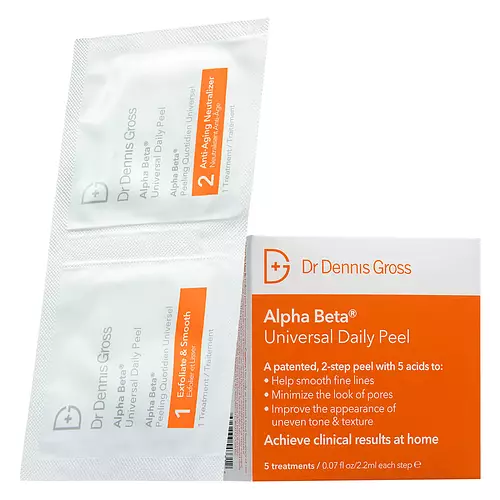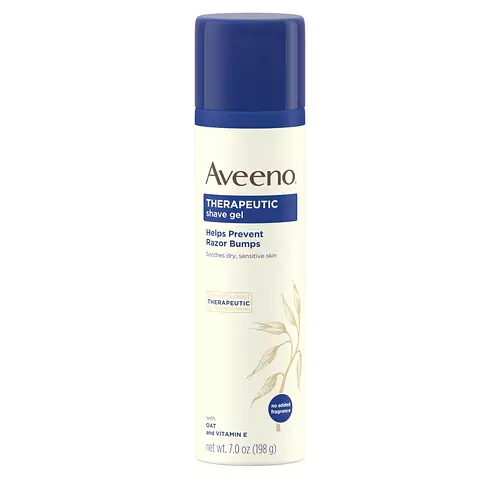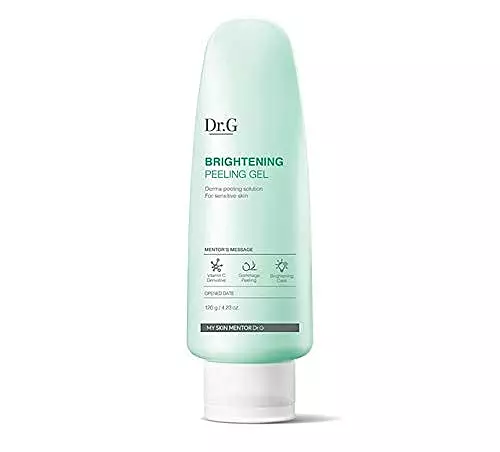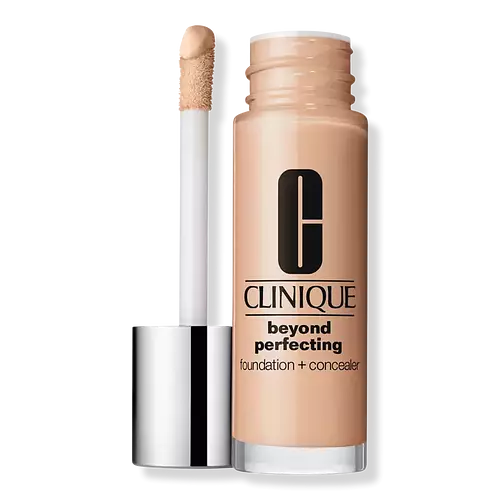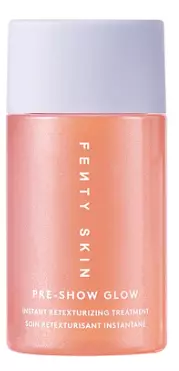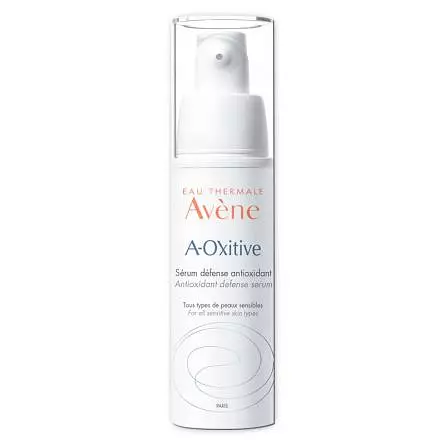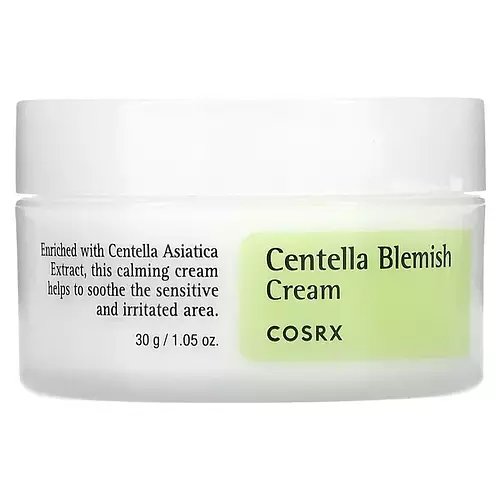Updated on March 25, 2024
Overview
What they are
These products are both vegan, cruelty-free, and reef safe . They have a total of 7 ingredients in common
Cool Features
They both contain AHA and BHA
Suited For
They're both likely to be good for fighting acne, anti aging, brightening skin, sensitive skin, oily skin, reducing pores, scar healing, dark spots and better texture
Free From
They both do not contain any oils, parabens or sulfates
What's Inside
They both contain fragrances
We independently verify ingredients, and our claims are backed by peer-reviewed research. Spot a product that needs an update? Let us know.
Ingredient Info
The Ordinary AHA 30% + BHA 2% Peeling Solution 25 ingredients
Dr. Dennis Gross Skincare Alpha Beta Universal Daily Peel 43 ingredients
At a glance
Click on any of the items below to learn more
The Ordinary AHA 30% + BHA 2% Peeling Solution 25 ingredients
Dr. Dennis Gross Skincare Alpha Beta Universal Daily Peel 43 ingredients
Notable Ingredients
This product contains 4 ingredients that may have this attribute:
This product contains 1 ingredient that may have this attribute:
This product contains 1 ingredient that may have this attribute:
Benefits
This product contains 1 ingredient that may have this attribute:
This product contains 2 ingredients that may have this attribute:
This product contains 1 ingredient that may have this attribute:
This product contains 4 ingredients that may have this attribute:
This product contains 5 ingredients that may have this attribute:
This product contains 2 ingredients that may have this attribute:
This product contains 2 ingredients that may have this attribute:
This product contains 5 ingredients that may have this attribute:
This product contains 1 ingredient that may have this attribute:
This product contains 6 ingredients that may have this attribute:
Concerns
This product contains 1 ingredient that may have this attribute:
This product contains 5 ingredients that may have this attribute:
This product contains 5 ingredients that may have this attribute:
This product contains 2 ingredients that may have this attribute:
Notable Ingredients
This product contains 4 ingredients that may have this attribute:
This product contains 1 ingredient that may have this attribute:
This product contains 2 ingredients that may have this attribute:
This product contains 2 ingredients that may have this attribute:
This product contains 1 ingredient that may have this attribute:
This product contains 1 ingredient that may have this attribute:
Benefits
This product contains 4 ingredients that may have this attribute:
This product contains 3 ingredients that may have this attribute:
This product contains 1 ingredient that may have this attribute:
This product contains 8 ingredients that may have this attribute:
This product contains 8 ingredients that may have this attribute:
This product contains 8 ingredients that may have this attribute:
This product contains 6 ingredients that may have this attribute:
This product contains 10 ingredients that may have this attribute:
This product contains 5 ingredients that may have this attribute:
This product contains 9 ingredients that may have this attribute:
Concerns
This product contains 6 ingredients that may have this attribute:
This product contains 3 ingredients that may have this attribute:
This product contains 10 ingredients that may have this attribute:
This product contains 8 ingredients that may have this attribute:
This product contains 8 ingredients that may have this attribute:
Ingredients Side-by-side
Ingredients Explained
These ingredients are found in both products.
Ingredients higher up in an ingredient list are typically present in a larger amount.
Glycolic Acid is arguably the most famous AHA with research to back up its benefits. Its main role is to peel the top layer of skin cells from the newer layer of skin underneath. This helps skin to remove dark spots and look more even.
Glycolic Acid has shown to boost collage production, a protein that helps skin stay firm. Overall, Glycolic Acid helps with improving uneven tone, rough patches of skin, fine lines, wrinkles, and sun damage. It also increases skin hydration by playing a role in creating molecules that create hyaluronic acid naturally.
When applying Glycolic Acid, it is normal to feel slight stinging. The pH value and concentration of glycolic acid play a role in the effectiveness of the product.
Recent studies have shown Glycolic Acid may protect the skin against UV damage. However, you should always wear SPF, especially when using exfoliants.
Read more about some other popular AHA's here:
Learn more about Glycolic AcidWater. It's the most common cosmetic ingredient of all. You'll usually see it at the top of ingredient lists, meaning that it makes up the largest part of the product.
So why is it so popular? Water most often acts as a solvent - this means that it helps dissolve other ingredients into the formulation.
You'll also recognize water as that liquid we all need to stay alive. Talk about multi-purpose! If you see this, drink a glass of water. Stay hydrated!
Learn more about WaterSalicylic Acid (also known as beta hydroxy acid or BHA) is one of the most well-known ingredients for treating skin that struggles with blackheads and acne. It helps to exfoliate both the skin's surface and pores, and also acts as an anti-inflammatory agent.
This multitasking property makes it a great ingredient for cleaning out pores, controlling oil production, and reducing inflammation.
Unlike AHAs which are water soluble, Salicylic Acid is oil soluble. This means that it's able to exfoliate the inside of pores and reduce blackheads.
Concentrations of 0.5-2% are recognized by the U.S. FDA as an over-the-counter topical acne product.
It can cause irritation and/or dryness if one's skin already has a compromised moisture barrier, so it's best to focus on repairing that before introducing a Salicylic Acid into your routine.
In general, Salicylic Acid is a great ingredient for oily acne-prone skin.
While salicylic acid does not increase sun-sensitivity, we still recommend wearing SPF.
If you are looking for the ingredient called BHA or Butylated Hydroxyanisole, click here.
Learn more about Salicylic AcidLactic Acid is an AHA that is derived from fermenting lactose, a carbohydrate from milk. It removes the top layer of old and dead skin cells and helps increase cell turnover.
Benefits of Lactic Acid are that it can help to reduce large pores and reduce the effects of aging. Some potential downsides are that it can be bad for dry skin, cause irritation, worsen eczema, and worsen rosacea.
Not only does it help exfoliate the skin, it helps strengthen the skin's barrier. When applied, lactic acid helps the skin create ceramides.
Lactic acid is an over-the-counter chemical exfoliant that comes from the fermentation of lactose — a carbohydrate found in milk.
Legend has it that Cleopatra used to bathe in sour milk to help reduce wrinkles.
Read more about some other popular AHA's here:
Learn more about Lactic AcidCitric Acid is an AHA derived from citrus fruits (think oranges, lemons, and limes!).
If you spot Citric Acid near the end of an ingredient list, it's likely there as a pH adjuster rather than an active ingredient.
As an AHA, Citric Acid removes the top layer of skin cells from the newer layer of skin underneath. This helps skin to remove dark spots and look more even.
Read more about some other popular AHA's here:
Learn more about Citric AcidPolysorbate 20 is made by combining ethoxylation of sorbitan, ethylene oxide, and lauric acid. It is a mild cleansing agent, surfactant, and emulsifier.
As a surfactant, it helps collect dirt and oils for washing. Emulsifiers prevent oils and water from separating.
Polysorbate 20 also adds scent to a product. Since it is made using sorbitol, it has a sweet scent. Sorbitol can also be found in fruits such as apples and peaches.
The lauric acid used to create Polysorbate 20 is often derived from coconuts.
Polysorbate 20 may not be fungal acne safe.
Learn more about Polysorbate 20Sodium Benzoate is a preservative. It's used in both cosmetic and food products to inhibit the growth of mold and bacteria. It is typically produced synthetically.
Both the US FDA and EU Health Committee have approved the use of sodium benzoate. In the US, levels of 0.1% (of the total product) are allowed.
Sodium benzoate works as a preservative by inhibiting the growth of bacteria inside of cells. It prevents the cell from fermenting a type of sugar using an enzyme called phosphofructokinase.
Sodium Benzoate is the salt of benzoic acid. Foods containing sodium benzoate include soda, salad dressings, condiments, fruit juices, wines, and snack foods.
Studies for using ascorbic acid and sodium benzoate in cosmetics are lacking, especially in skincare routines with multiple steps.
We always recommend speaking with a professional, such as a dermatologist, if you have any concerns.
Learn more about Sodium BenzoateIngredient Ratings
Here's what our community thinks of the ingredients in these two products.
When to use
The Ordinary AHA 30% + BHA 2% Peeling Solution 25 ingredients
Dr. Dennis Gross Skincare Alpha Beta Universal Daily Peel 43 ingredients


Reviews
Here's what our community thinks
The Ordinary AHA 30% + BHA 2% Peeling Solution 25 ingredients
BrodyTosi
Speaking anecdotally, please be very well informed and careful if you choose to use this product. While this product contains both AHA and BHA...
Speaking anecdotally, please be very well informed and careful if you choose to use this product. While this product contains both AHA and BHA chemical exfoliants I will be emphasizing its AHA content as a potential safety/irritant concern to the skin. Alpha hydroxy acids in this concentration can very easily over-exfoliate by stripping corneocytes from, or desquamating, the outermost stratum corneum of the epidermis. While this product formulation is vague about specific AHA composition of “30%”, The Ordinary’s website states that glycolic acid is the primary alpha hydroxy acid in their formula. Current clinical research (and the FDA) has established a general consensus that the concentration of AHAs for safe routine use in over the counter products is approximately in the figure range of 2-10%. For reference, dermatologists with over 8 years of medical and residency training perform chemical peels with glycolic acid ranging in concentration anywhere from 20-70% depending on intended penetration of the stratum corneum. With that said, there are some individuals with skin who can tolerate this level of exfoliation, but my personal philosophy is that less is more with chemical exfoliants. If you are thinking about using this product please do your due diligence and look into open-access research on chemical exfoliants, consider all exfoliant options side-by-side/if a chemical exfoliant is right for you, and understand your skin’s sensitivity level before jumping to one product.
cgi
one of my fav chemical exfoliators. i recommend this for people with oily/acne-prone skin, those with dry or sensitive types should probably...
one of my fav chemical exfoliators. i recommend this for people with oily/acne-prone skin, those with dry or sensitive types should probably avoid.
NOTES: please be careful with this. i’ve seen so many people use this product incorrectly and would end up getting a bad reaction (like literally burning their face). then leave bad review without having used it properly. this is a CHEMICAL exfoliating peel, it will sting but it should NEVER burn. if it does, your skin either cannot handle it or it was applied wrong.
here’s how to make sure it’s being used correctly:
- don’t use it with any clashing ingredients in your other products. (ex: vitamin C)
- don’t use it if you have open wounds (picked pimples)
- make sure your skin is completely dry before application, only use 2-3 drops or enough to cover your face.
- it should be a thin red layer, not thick, or you’ll burn your skin.
- AVOID APPLYING ON EYE AREA
- do NOT leave it on for more than 10 minutes, even if you don’t feel anything. you will completely strip and damage your skin.
- make sure to use sunscreen every morning while using this.
i use this once a week at night time after i cleanse my face. i first started to notice a difference after a couple weeks of use, my breakouts were disappearing and it reduced the bumps on my skin. it does an excellent job of improving skin texture and removing blackheads/blemishes. my skin always feels so smooth after use. it helped a lot of my dark spots and acne scars fade. i also love how cheap this is, a holy grail under $10.
the only things i don’t like about this is the sensation and smell. it doesn’t hurt (no skincare product should anyway) but it does sting, which is to be expected of. it has a weird smell to it, i’m not sure how to describe it but it’s not bad. i personally don’t mind fragrance as it doesn’t bother my sense of smell or irritate my skin. this product could be irritating to others though. it all entirely depends on your skin.
Dr. Dennis Gross Skincare Alpha Beta Universal Daily Peel 43 ingredients
Derma.Anne
These peel pads are the GOAT. They're almost like a chemical peel at a skin clinic, but safe for using at home. The give an instant glow and plump...
These peel pads are the GOAT. They're almost like a chemical peel at a skin clinic, but safe for using at home. The give an instant glow and plump to the skin which I love, and keeps my hormonal acne and clogged pores at bay.

